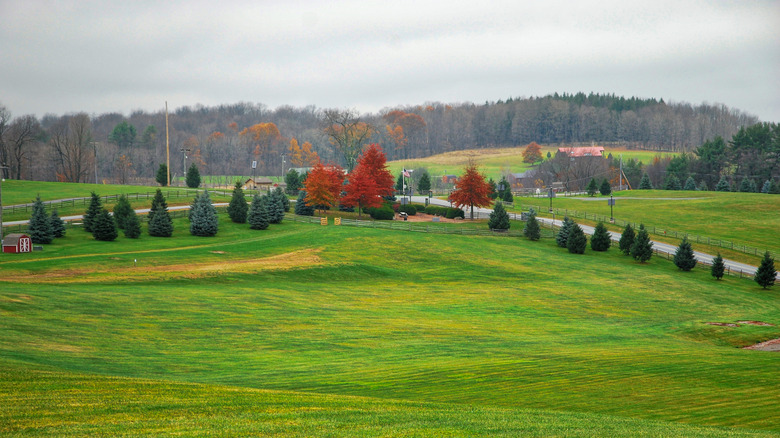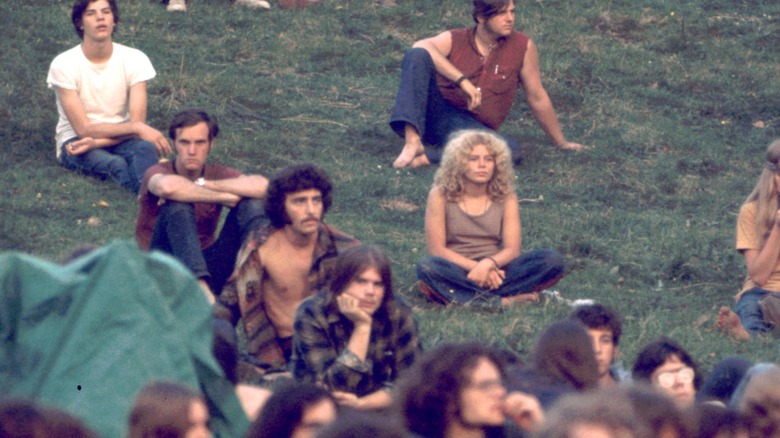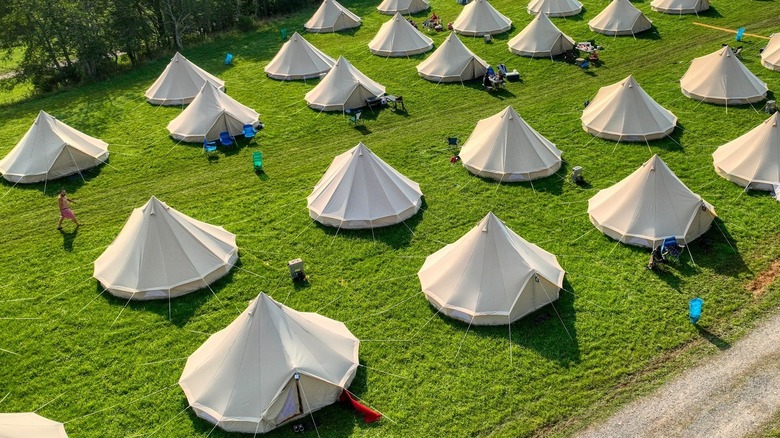To say that 1969’s Woodstock Music and Art Fair holds a permanent place in culture would be an understatement. It epitomized good music, free love, and groovy vibes, thanks to the performances of Jimi Hendrix, Janis Joplin, the Grateful Dead, Joan Baez, and more. The three-day festival captured a historic moment of time, and Woodstock has since become the symbol of peace, love, and counterculture. What may be news to many, however, is that it didn’t actually take place in Woodstock, New York. While what is arguably the world’s most legendary festival was named after the quirky, artsy town of Woodstock — where organizers originally hoped to build a recording studio – it was ultimately held in Bethel in the Catskills, a little over 100 miles or two hours from New York City. Another thing that people may not be privy of? You can camp there yourself.
Since the mid-2000s, the Bethel Woods Center for the Arts has carried on the Woodstock tradition by hosting live music acts by artists like Smokey Robinson, Lady Gaga, and Ringo Starr in its Pavilion amphitheater. In 2024, it opened a 528-site campground, allowing visitors to camp either on the historic grounds where Woodstock festivalgoers once slept or next to the modern stage where today’s biggest names in music perform. Whether you prefer car or RV camping, pitching a simple tent, or relaxing at a luxurious site, Bethel Woods is an ideal place to visit to combine nature, history, and culture, and tap into the energy that made the original Woodstock such a powerful milestone event.
What was camping like at Woodstock ’69?
While organizers expected about 50,000 attendees, roughly 400,000 people showed up for the Woodstock Festival in 1969, setting up tents across the 600-acre land of dairy farmer Max Yasgur. A camping advertisement at the time claimed that you could “walk around … without seeing a skyscraper or a traffic light. Fly a kite, sun yourself.” But as we all know, the reality was starkly different. Unforeseen challenges — hundreds of thousands of attendees, constant rain, and poor planning — rendered this false advertising, as festivalgoers found themselves slipping through the mud under cloudy skies with little access to food, water, or bathrooms.
Despite the adverse conditions, however, there were no incidents of violence on the muddy fields, the festival’s chief medical officer told Spokane Daily Chronicle — a remarkable feat considering the massive size of the crowd. That’s part of what made Woodstock such a lightning-in-a-bottle moment, even if memories of attendees were mixed. As Grace Slick of Jefferson Airplane recalled in an interview with CBC, “Woodstock was fun. If you’re 18 and you don’t care about sitting in the mud, it’s fun … For us, it wasn’t quite as marvelous.”
The good news is those who want to sleep at the original Woodstock site may now do so without worrying about not having access to all the essentials one may need for a successful camping trip or experiencing the same level of discomfort folks faced in August 1969. Bethel Woods Center for the Arts offers a camping option on the same fields where festivalgoers slept in between historic sets by Jimi Hendrix, Jefferson Airplane, and Creedence Clearwater Revival. This site includes space for RVs, cars, and basic tents, allowing visitors to combine modern amenities with a legendary location and feel like they’re part of the Woodstock legacy.




